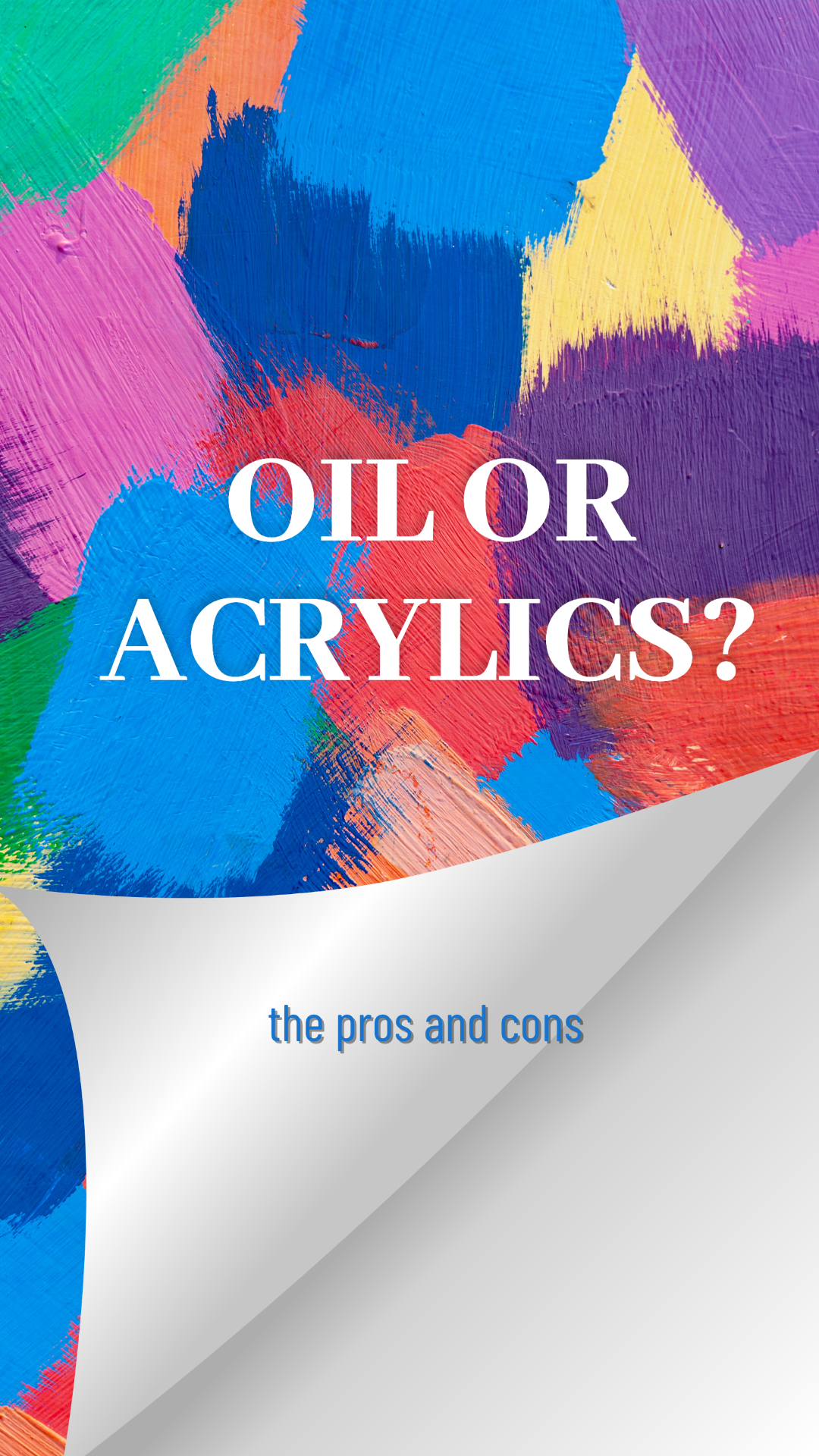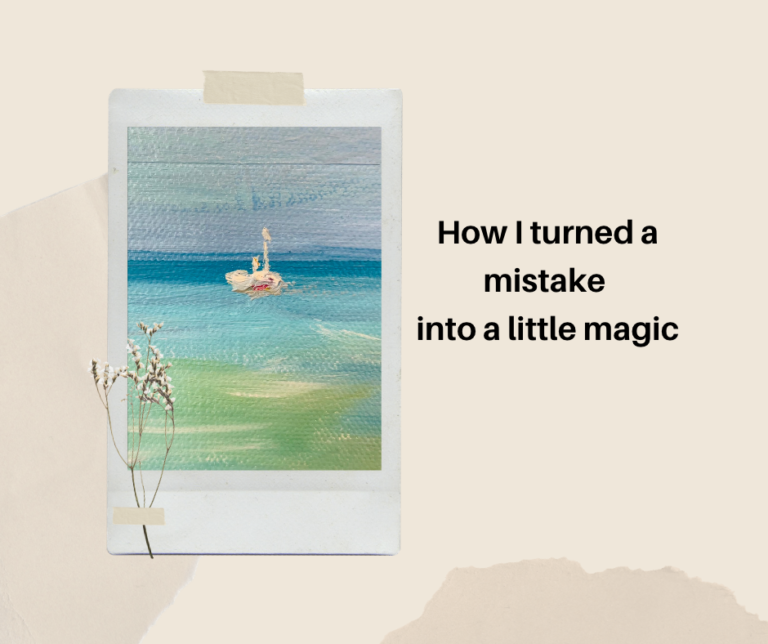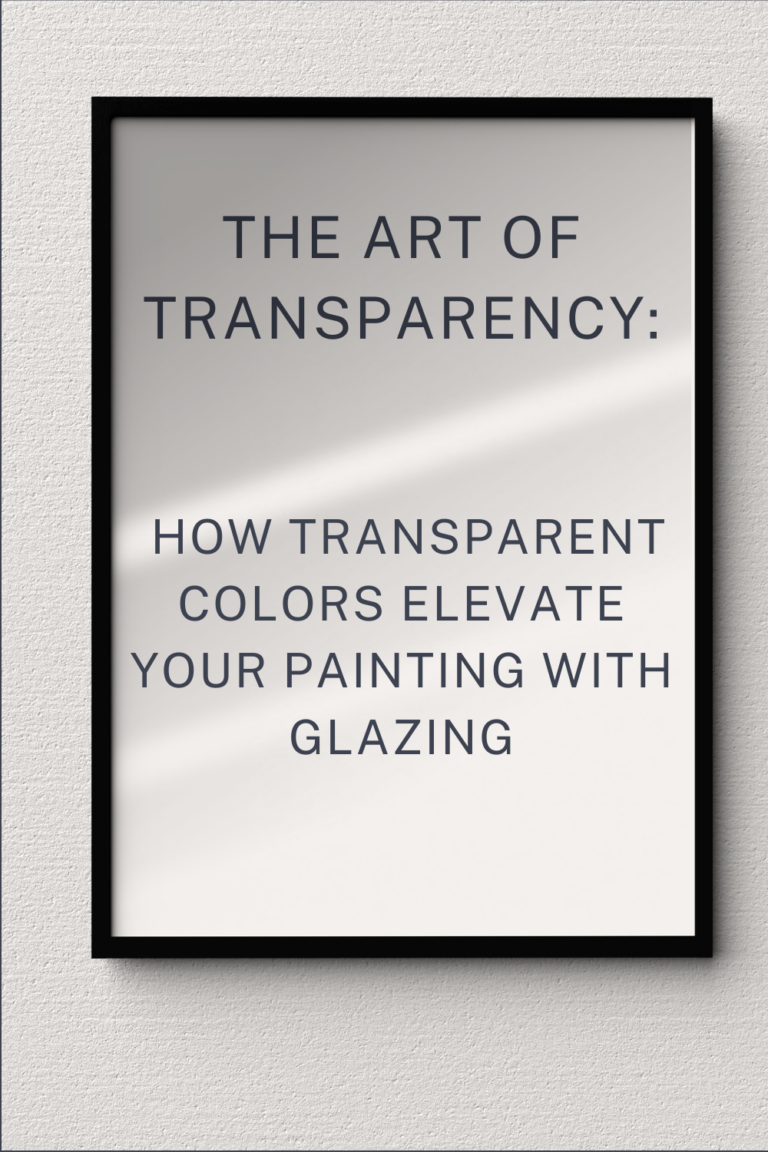Oil and acrylic paints are two of the most popular mediums for painting, each with its own unique qualities and drawbacks. I personally like them both and use both of them often. Here are some pros and cons of using oil and acrylic paints:
Oil Paints:
Pros:
- Slow drying time: Oil paints take longer to dry than acrylics, allowing for more time to blend and layer colors.
- Rich colors and textures: Oil paints have rich, vibrant colors that can create a sense of depth and texture in a painting.
- Versatility: Oil paints can be applied in various ways, from thick impasto to thin washes, making them versatile and adaptable to multiple painting styles.
Cons:
- Longer drying time: While slow drying time can be an advantage, it can also be a disadvantage if you need to work quickly or make changes to your painting.
- Toxicity: Some oil paints contain toxic materials, such as lead, that can be harmful if ingested or inhaled. Proper ventilation, like fans or open windows, and protective gear like gloves are necessary when working with oil paints.
- Cleanup: Oil paints require solvents like mineral spirits or turpentine for cleanup, which can be messy and potentially harmful if not handled correctly. I have been using, and will forever use, the Master’s brush cleaner soap. It’s simply the best, and leave the brushes soft and clean. I even use it to clean cooking oil stains. Click here for the link: https://amzn.to/3UVFAsW
Acrylic Paints:
Pros:
- Fast drying time: Acrylics dry quickly, making them ideal for artists who work speedily or want to layer colors without waiting for paint to dry.
- Water-soluble: Unlike oil paints, acrylics can be thinned and cleaned with water, making them less toxic and easier to clean up.
- Long-lasting: Acrylic paints are resistant to cracking and fading over time, ensuring that your painting will last for many years.
Cons:
- Limited blending time: Acrylics dry quickly, giving artists a limited amount of time to blend and layer colors before the paint dries. I have tried many mediums to slow the drying time. And this one from Golden brand is my favorite–:https://amzn.to/3Ami3ba
- Limited color range: While acrylic paints come in a wide range of colors, they are not as vibrant as oil paints.
- Lack of texture: Acrylics tend to dry with a flat, matte finish, lacking the depth and texture of oil paints. But you can use paint vanish to compensate for some of it.
When do I use acrylics, and when do I use oil? When I need to work on a relatively simple piece with abstract flavor to it, I use acrylics for sure— for their fast-drying time and contemporary feel.
When I need to work on more details or complicated, realistic features like portraits, I will definitely use oil. The skin tone I can get from oil simply can’t be duplicated in acrylics. See my award-winning portrait painting below.
Sometimes I will also do a hybrid painting, that is, put down acrylics as the first layer, then add oil on top. Remember, you can only add oil on the top of acrylics, not the other way around. It’s the “fat over lean” rule. This means oil contains fat elements. If you lay acrylics on top of oil, the surface will crack over time.
What medium do you use? I’d like to hear it!




